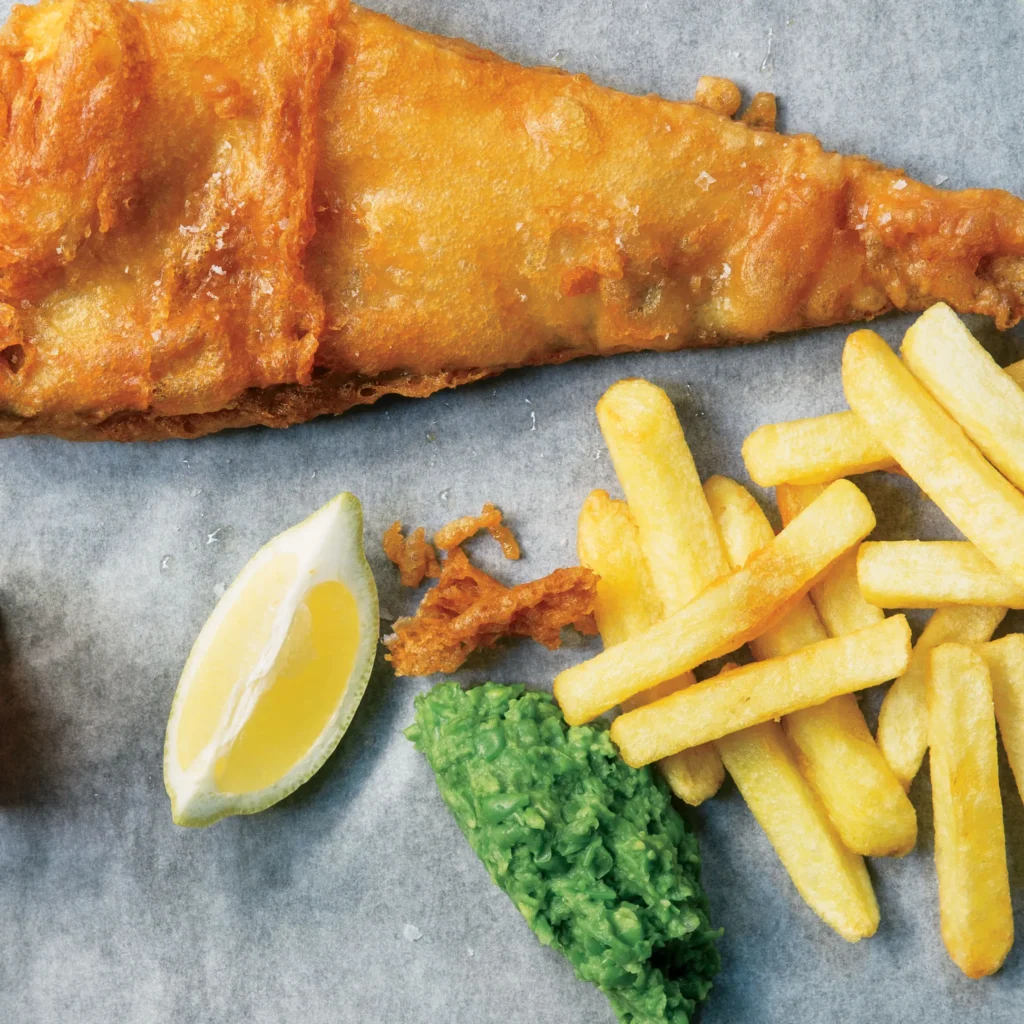From minted to vividly green, batch-cooked to vacuum-packed, mushy peas today are anything but uniform. We find out what makes mushy peas different and why this unassuming side is now a menu essential
Mushy peas are as deeply embedded in British chip shop culture as the fish and chips themselves. Once considered a humble accompaniment, they’ve risen in status to become a key profit driver and a surprisingly competitive part of the fish and chip business. And while the backbone of any good mushy pea remains the same – the trusty marrowfat pea – the way they’re prepared, presented and marketed can vary from shop to shop.
No matter where you go, there’s one rule of mushy peas that everyone stands by: it all starts with the marrowfat pea. Plump and starchy, these peas are soaked overnight – sometimes for up to 36 hours – to break down pectin and soften them for cooking. But it’s not just the soaking that matters, how you wash them is a point of pride.
“If you don’t rinse them, they can look dirty when they are cooked, which is not what anyone wants,” says Des Anastasiou, owner of Burton Road Chippy in Lincoln, Lincolnshire. He’s been making homemade mushy peas for the past 25 years and recommends two or three rinses for a clean, quality result.
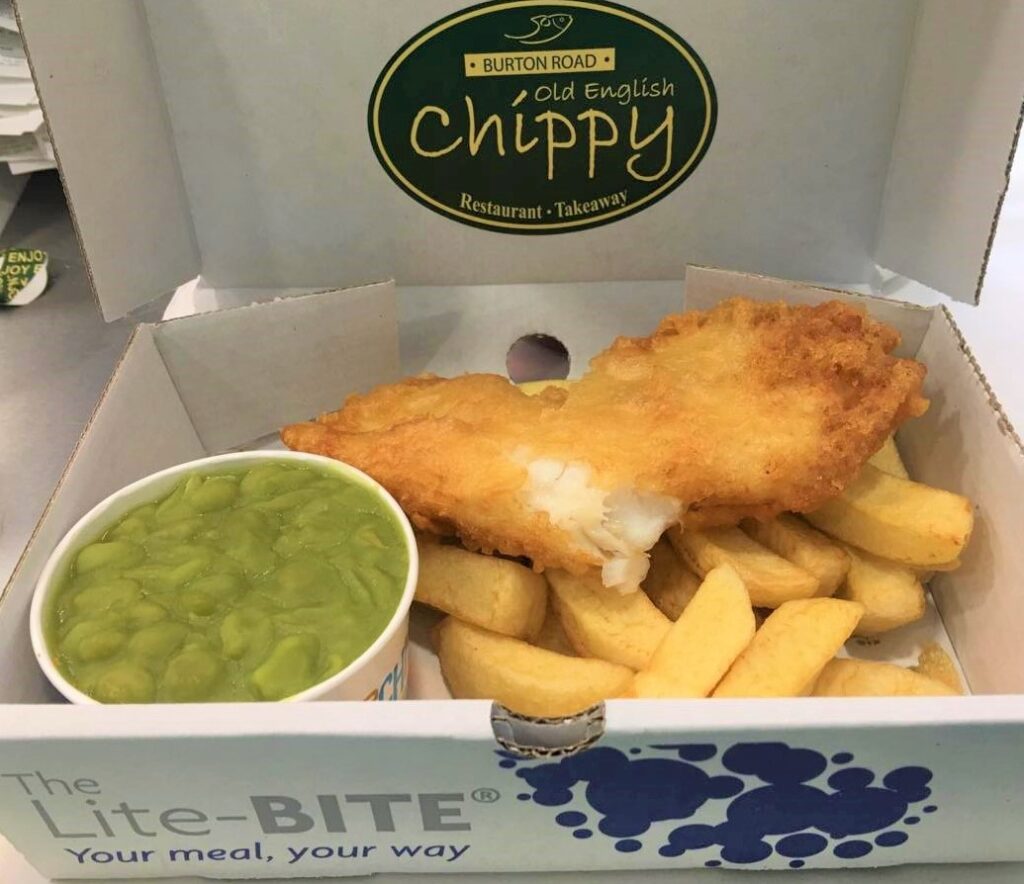
Flavour journey
Once soaked, the flavour journey begins and this is where shops tend to do things differently.
Using a recipe passed down by his mum, who always served mushy peas with her Sunday roast, John Molnar of The Cod’s Scallops in Nottingham keeps it traditional but packs in some additional flavour. “We put bicarb in, plenty of white pepper, salt and a lot of love,” he says. John even nods to the area’s roots by offering minted mushy peas, a local favourite inspired by Nottingham’s Goose Fair, an annual fun fair that has been part of the city’s history since at least 1284.
Graham Kennedy, owner of the five-strong chain Bells Fish & Chips in the North East, takes a more visual approach. “The natural green is a bit weak, so we do add a bit of green colouring,” he comments. “Alongside bicarbonate of soda and salt, this creates a familiar look that customers expect.”
At Seniors, which operates 10 takeaways across the Fylde coast and Preston in Lancashire, owner Alastair Horabin has created his own bespoke pea seasoning mix to ensure customers receive the same taste and colour, whether in Blackpool or Lytham. He explains: “As the business grew and we took on more sites, the staff were getting less consistent, and it drove me mad. So I sat down and came up with a mix that I liked and standardised it. Now all the staff cook the same number of kilos of peas a day with the same amount of water a day and the same amount of mix a day.”
The way shops prepare mushy peas is often dictated by scale, equipment and ethos. At Seniors, for example, peas are made in bulk at designated sites and then sent out to shops. “We cook them fresh every day at about half the shops and send them out to the others,” Alastair explains. Standardisation is crucial, and it’s about simplifying so that “even an 89-year-old could do it,” says Alastair.
The Cod’s Scallops takes a similar approach, cooking mushy peas at Top Floor, its development kitchen above its Mansfield Road shop, and sending them out vacuum-packed in kilo pouches for shops to reheat. This enables John to maintain quality across multiple locations while ensuring staff aren’t overwhelmed during service.
Bells, again, takes a slightly different route. Still making peas fresh each day, staff use a blast chiller to cool cooked mushy peas quickly and decant them into bain maries to reheat a container at a time. Any heated leftovers get thrown away at the end of the night, but any unused bain maries can be carried over to the next day. “It means very little wastage and staff have a head start the following day while they wait for that day’s peas to be ready,” he says.
Meanwhile, Des Anastasiou at Burton Road Chippy still makes his mushy peas the traditional way – fresh daily, with no batch prep. “If we run out, I say to my customers, Sorry, I ran out. It’s evidence we make them fresh,” he says.
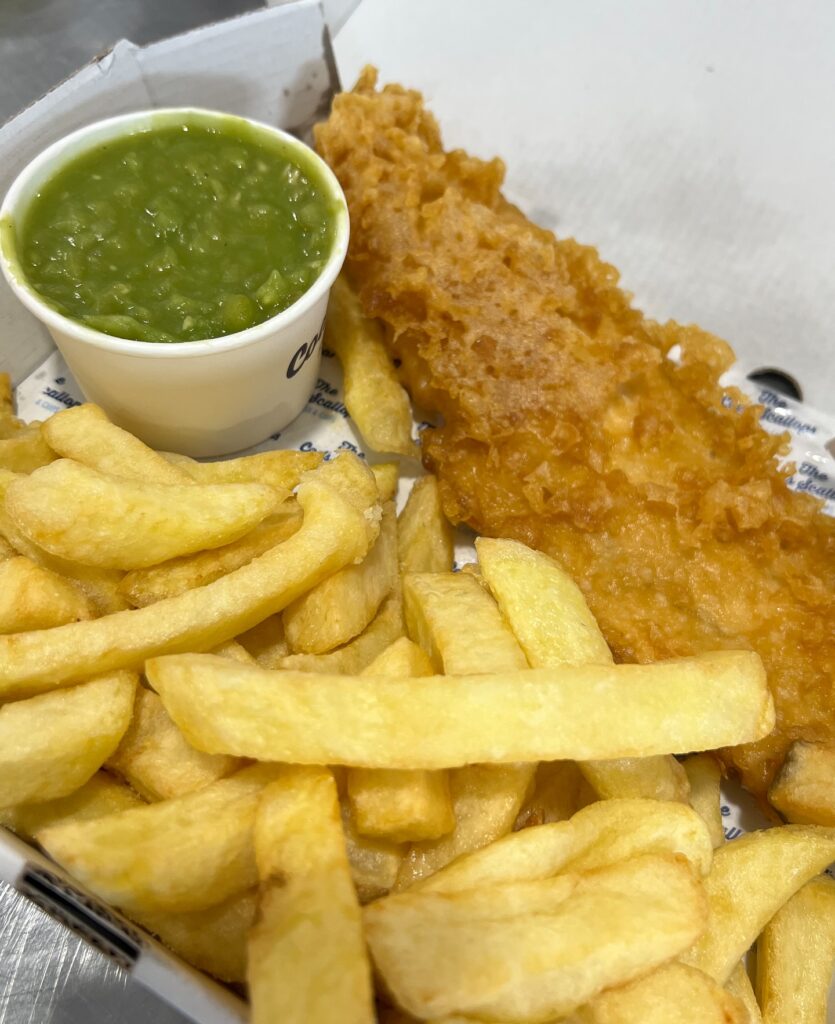
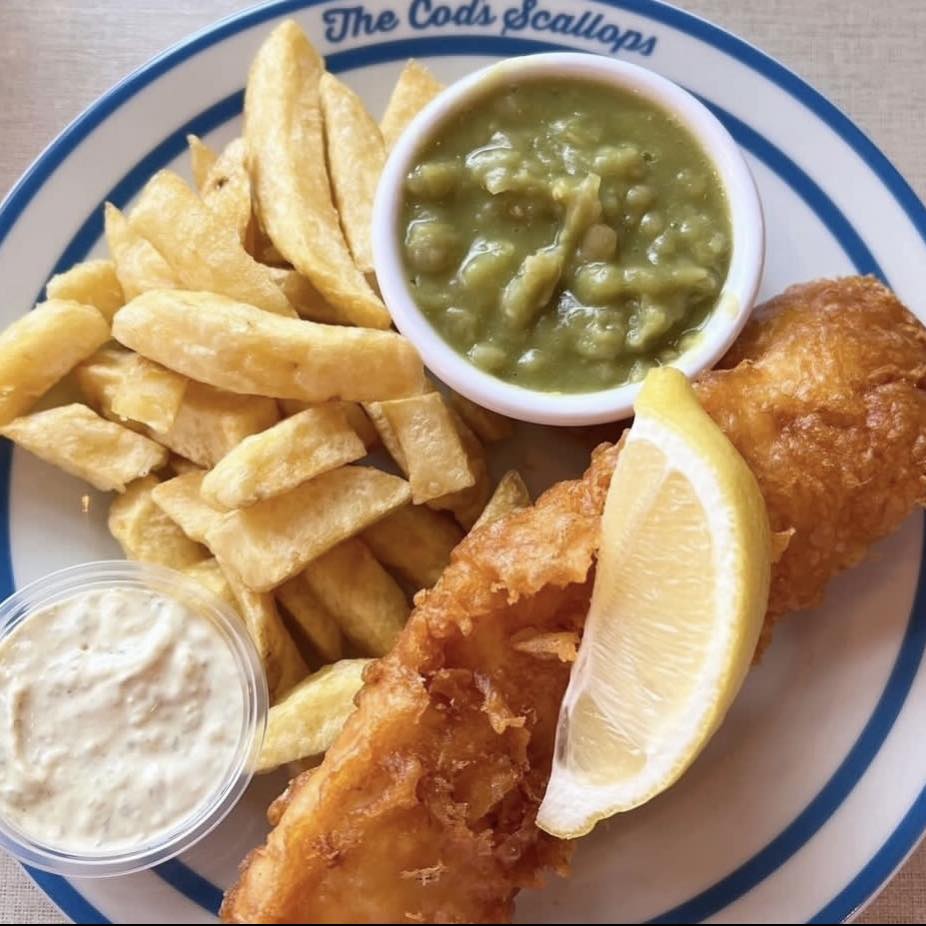
Margin machines
As well as being a must-have side to fish and chips, mushy peas are excellent margin machines at a time when profits on fish are tight.
Graham reports that across his five sites, he sells 1,200 portions per week. At just under £2 for a 6oz pot, Bells generates almost £2,500 a week from mushy peas alone, with 80% of that pure profit.
“It’s the single biggest profit margin you’re ever going to get,” says John at The Cod’s Scallops. He buys marrowfat peas by the pallet, using 25 kilos of dried peas per day, and mushy peas consistently outsell every other wet side.
Across all Seniors’ sites, mushy peas are its biggest selling side, followed by gravy and then curry. “They’ve always been a key part,” says Alastair. He uses bundled meal deals to drive value perception, combining sides, drinks and mains to create a compelling offer that boosts spend.
At Bells, however, you won’t find mushy peas in a meal deal, with Graham explaining: “We tried meal deals, but it didn’t work for us. Customers were saying, ‘I don’t like peas, do I get the money off?’. Or they would ask if they could swap them for something else, so now we just let customers choose,” he says.
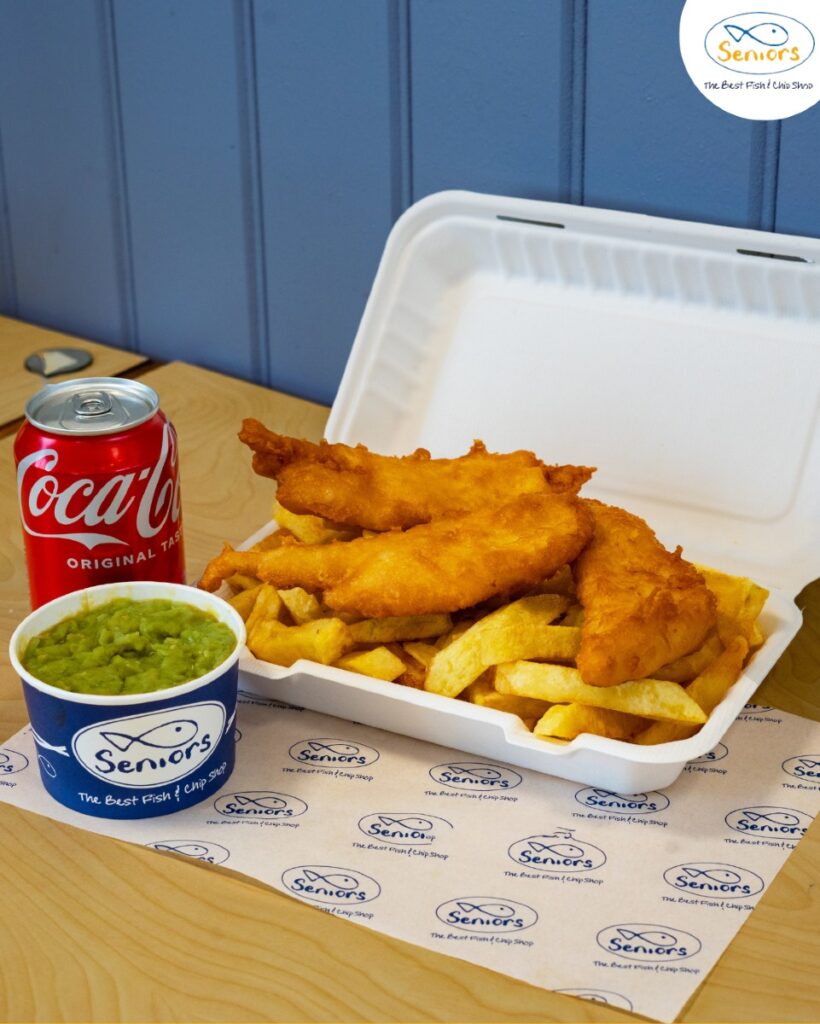
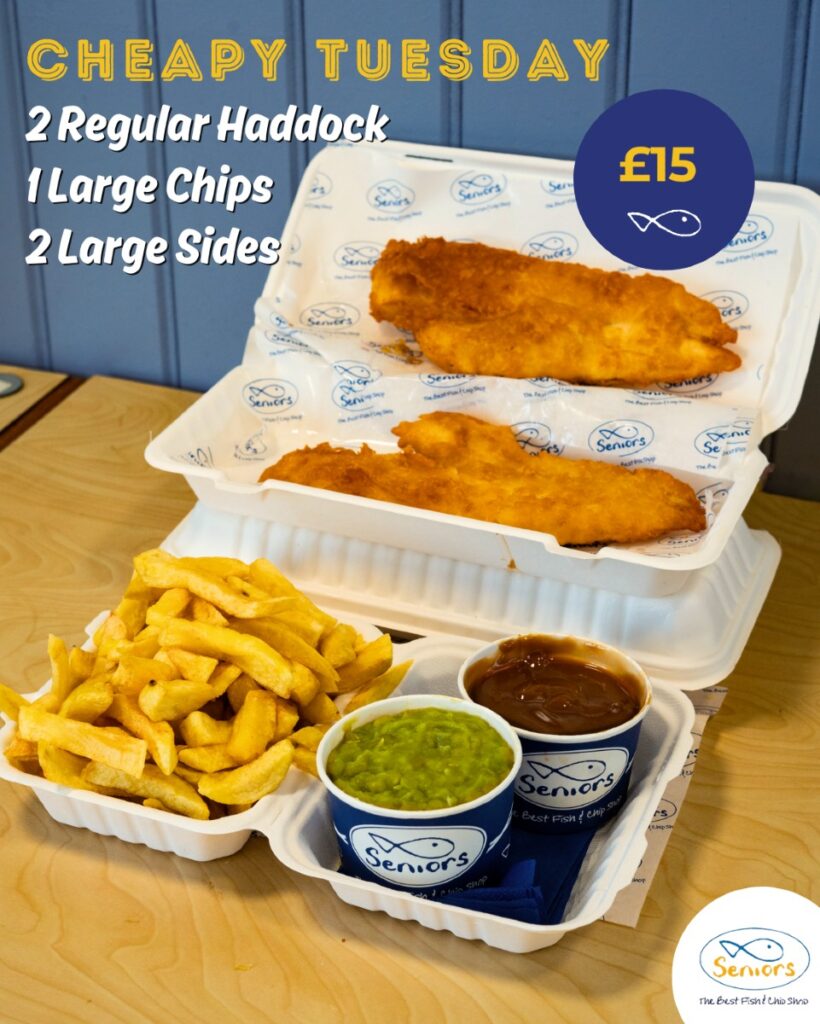
As well as how they’re sold, Seniors has also given much thought to how its peas are packaged, with Alastair investing in branded pots, even though fish and chips are served in plain, white, biodegradable boxes. He explains: “The pea pot is something most people will put on the dinner table, so having some form of branding, despite being an expense we usually try to minimise, helps get our name out there. Especially now, when so many customers take photos of their food.”
There’s no doubt that mushy peas still resonate with a majority of customers, especially in the north. Des estimates that 40% of side orders at Burton Road Chippy are mushy peas, while John sees peas as “almost as popular as fish and chips itself”.
However, not everyone is confident in their long-term appeal, and offering a range of sides is always a good option. Bells’ Graham Kennedy has noticed this shift and comments: “The younger element is more curry-based rather than mushy peas-based. I think it’s an age thing.” Still, Bells continues to sell in volume – proof that while trends evolve, tradition holds strong.
Pea prepared

Greenvale Pea Preparation from Drywite ensures an appetising colour to boiled peas. To obtain the colour of fresh green peas, add 20ml (four teaspoons) of Greenvale preparation to each 4.54 litres (one gallon) of water necessary to cover the required quantity of peas and boil in the usual way.
Drywite 01384 569556 www.drywite.co.uk

